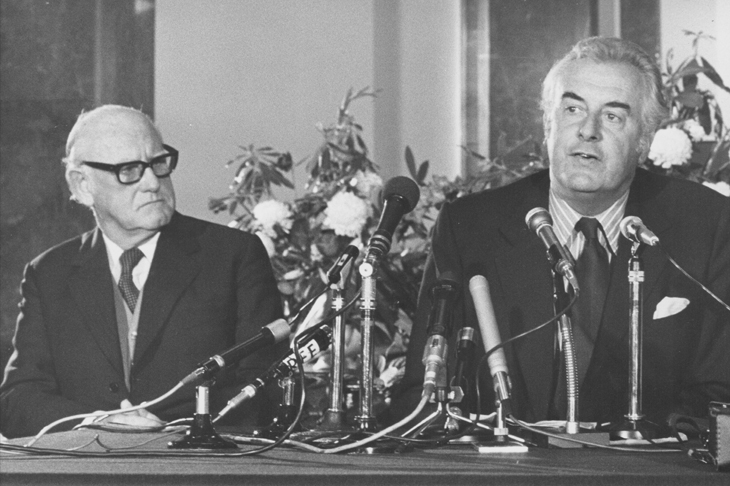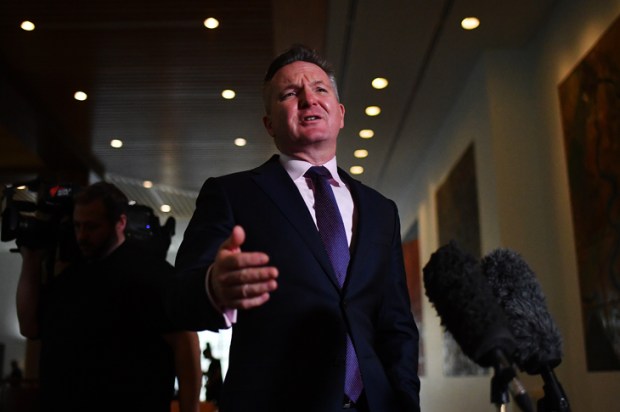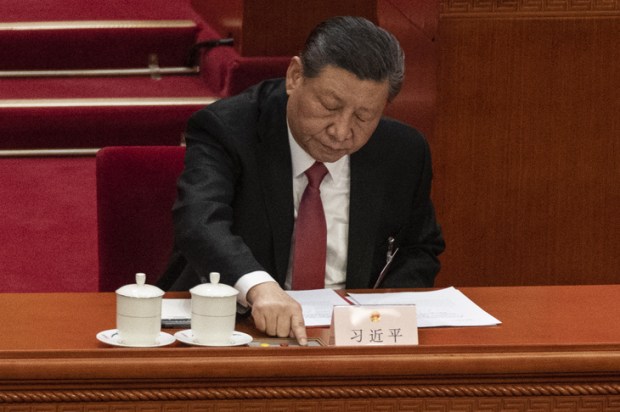Contrary to claims in two articles by David Pearl in these pages (‘The demonisation of Sir John Kerr’ and ‘Dismiss dismissal dogma’) our revelations about the former governor-general and his dismissal of the Whitlam government depict the authentic Kerr, not the so-called pantomime version.
The primary source material on Sir John Kerr is now immense – his own memoirs, his oral history for the National Library, the hundreds of pages of Kerr papers, letters and notes in the National Archives and now 212 letters to and from Buckingham Palace covering his period as governor-general.
We think it fair to say we have read them all and have drawn upon them in two books we have written – The Dismissal in 2015 and The Truth of the Palace Letters in 2020. We have also conducted interviews with scores of people including Palace and Government House officials, former governors-general, public servants, advisers, former politicians and judges as well as studying records from Kerr’s predecessor, Sir Paul Hasluck making clear his disagreement with Kerr’s actions.
In his Palace correspondence we conclude that Kerr was two-faced – offering the Palace one side of his disposition and Whitlam another side. He seeks reassurance from the Palace but we warn this can be misinterpreted because Sir John ‘never forgets the power equation’ and that he wants ‘the support of the Palace in order to maximise his own discretion and freedom for constitutional action.’ Our book traces Kerr’s turbulent journey and his emotional ride – from his frustration in the crisis prelude to his agitation post-dismissal.
Our aim is to capture the complex nature of the man and why he acted the way he did. We reject any notion we portray Kerr as a ‘pantomime villain’. At the same time we reject the astonishing claims Pearl makes about the dismissal and our coverage.
He complains we offer only muted criticisms of the political leaders, Gough Whitlam and Malcolm Fraser. This is extraordinary. We are strong critics of Fraser for blocking supply but say his tactics during the crisis were highly astute. We argue Whitlam was entitled to challenge the Senate while supply was available but are strong critics of Whitlam’s tactical ineptitude during the crisis.
Pearl says the crisis was brought about by Whitlam and Fraser and they ‘should bear the lion’s share of the responsibility’ and even claims Kerr was ‘more victim than author of the drama’. This defies common sense. Of course, the parliamentary deadlock was triggered by two ambitious political leaders. But it fell to the governor-general to resolve the deadlock – that was Kerr’s job. It was his pay grade. It is the ultimate test of monarchical responsibility and the wisdom of a governor-general.
That’s why such attention is given to the selection of each governor-general – the incumbent may have to resolve a deadlock. Walter Bagehot said a sovereign had three rights – to be consulted, to encourage and to warn and that a wise sovereign would want nothing more. The reason the Crown still exists is its ability to discharge this role – and this is where Kerr failed.
Pearl’s central mistake is to assume Kerr had no choice but the 11 November dismissal. This is absurd. Kerr’s choices were obvious – to follow Bagehot’s dictum and speak frankly to his prime minister. This could have been done before the crisis, when supply was blocked in mid-October, later in the crisis or close to 11 November. There were multiple choices about timing and how to proceed.
The Queen’s private secretary, Sir Martin Charteris, told Kerr to get close to his prime minister. He advised Kerr on 4 November against resort to the reserve powers unless there was ‘demonstrably no other course’ knowing there was always another course – warning the PM, advice Kerr ignored.
It is extraordinary that Pearl asserts Australia’s governor-general does not operate by the ‘consult, encourage and warn’ rules that the Queen follows – apparently because the G-G does not have job protection. This sounds like a new doctrine. It is arrant nonsense and is not accepted by our recent incumbents, Peter Cosgrove and Quentin Bryce.
In his final misleading conclusion Pearl justifies Kerr’s dismissal of Whitlam in an ambush saying it was necessary because Kerr believed Whitlam would have otherwise contacted the Palace to have him removed.
Indeed, he tries to invest Kerr’s action with moral courage. Dismissal by ambush and deceit of the PM as an act of moral courage? That never had traction. Pearl said he wants to breathe ‘fresh life’ into the story but he offers another ritualistic apologia for Kerr.
The truth is all the talk about Kerr’s agonising dilemma is a complete Kerr construct. There was no justification for deceiving his prime minister throughout the entire crisis, as Kerr admits that he did. And nobody will ever know what Whitlam would have done if honestly consulted by the governor-general.
Pearl defends Kerr’s dismissal saying ‘all he was doing’ was putting the dispute before the people. This is laughable. The urgency for an election by 11 November only reveals Kerr’s irresponsibility – his refusal to tell this to Whitlam as any subsequent governor-general would have done, as Cosgrove advised in his recent memoir, as Bryce would have done and as Sir Anthony Mason says he advised Kerr at the time.
Kerr violated the most sacred obligation attached to his office and attached to the Crown. If Whitlam had approached the Palace the responsibility for any damage done would have rested with Whitlam, not Kerr. There is, moreover, no equivalence between these two risks – deceiving the prime minister over a dismissal was a far greater impropriety than the risk the PM would advise the Palace on Kerr’s recall.
Pearl tries to depict the 1975 election result as a vindication of the dismissal calling it a referendum on Kerr’s action. He can claim this but never prove it. Fraser blocked supply and then urged Kerr to dismiss Whitlam to procure an election precisely because he knew he would win that election convincingly. The public voted on the candidates – Fraser and Whitlam – and the record of the Labor government.
Got something to add? Join the discussion and comment below.
Get 10 issues for just $10
Subscribe to The Spectator Australia today for the next 10 magazine issues, plus full online access, for just $10.
You might disagree with half of it, but you’ll enjoy reading all of it. Try your first month for free, then just $2 a week for the remainder of your first year.














Comments
Don't miss out
Join the conversation with other Spectator Australia readers. Subscribe to leave a comment.
SUBSCRIBEAlready a subscriber? Log in